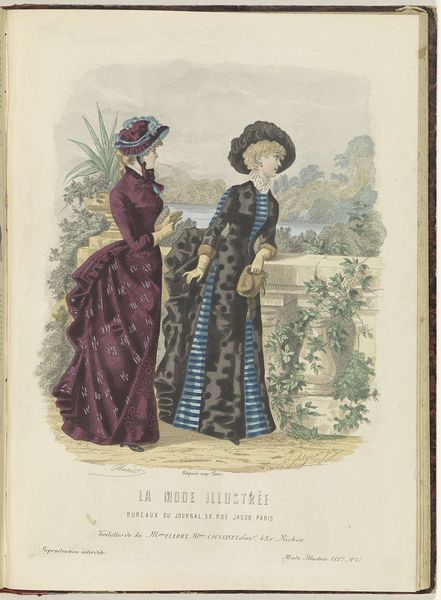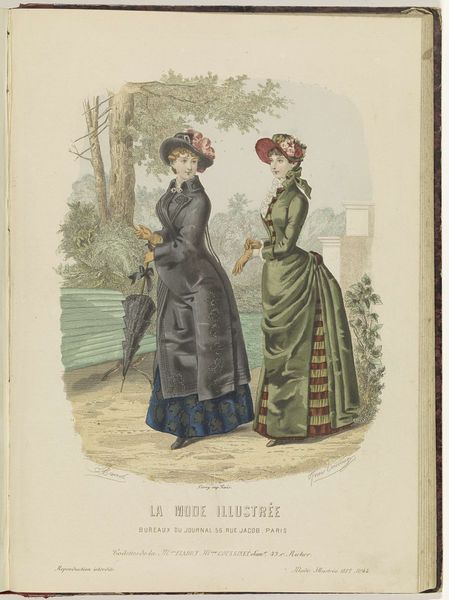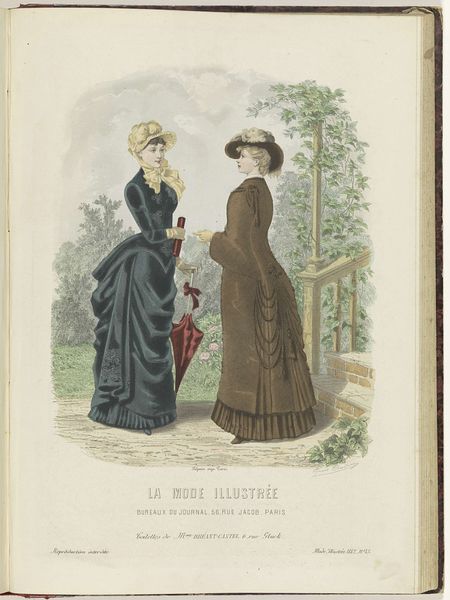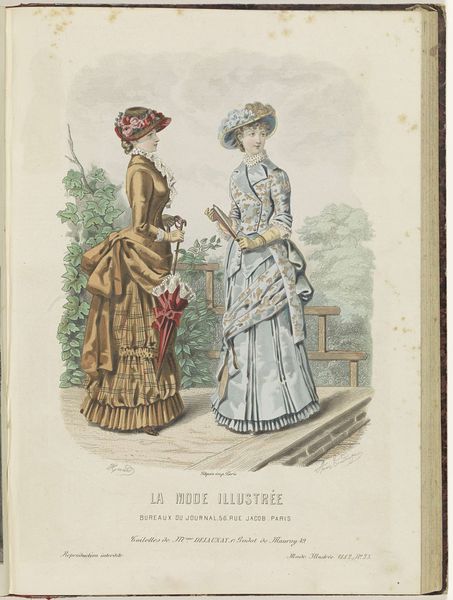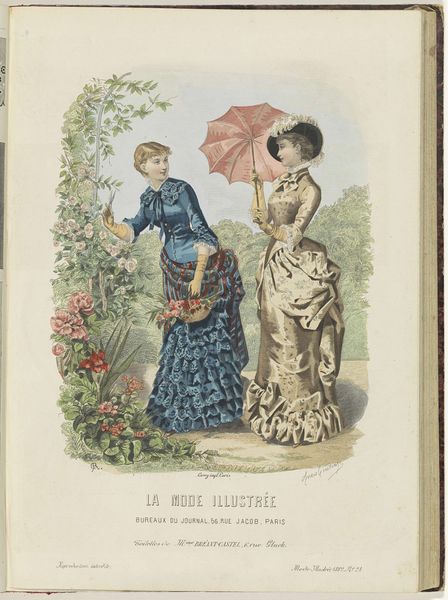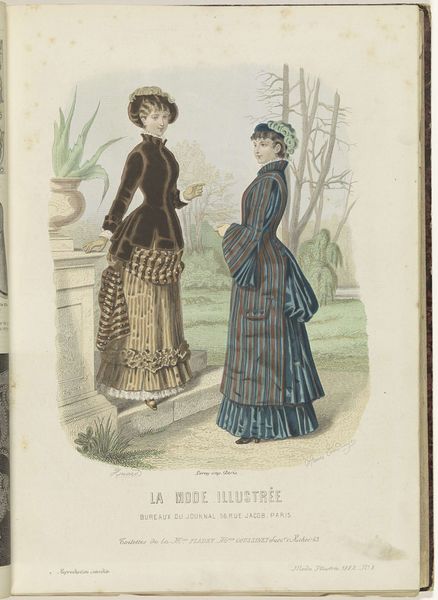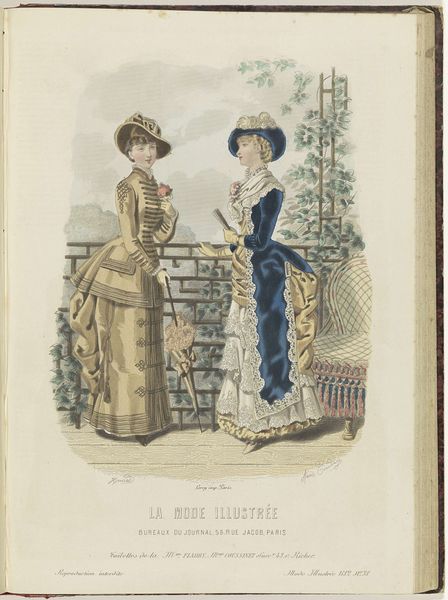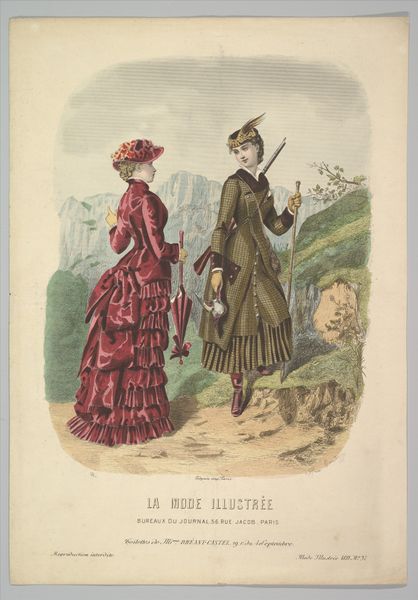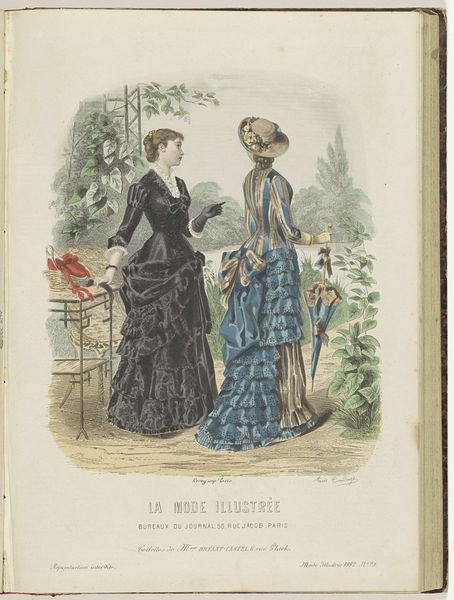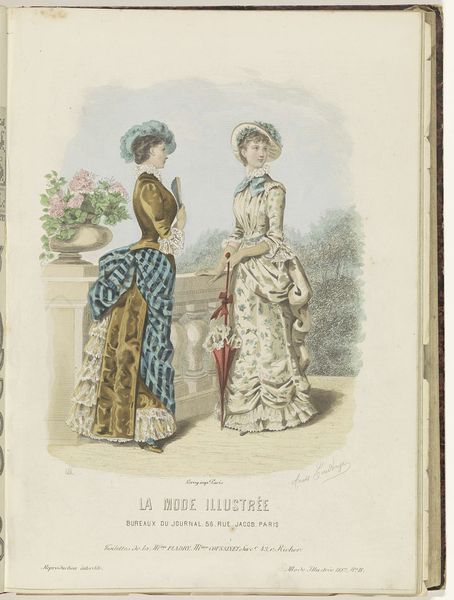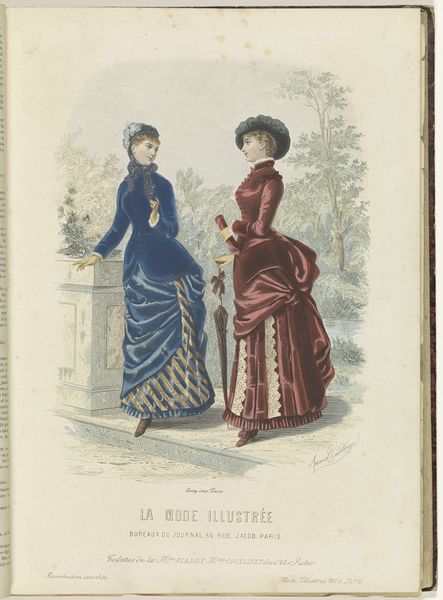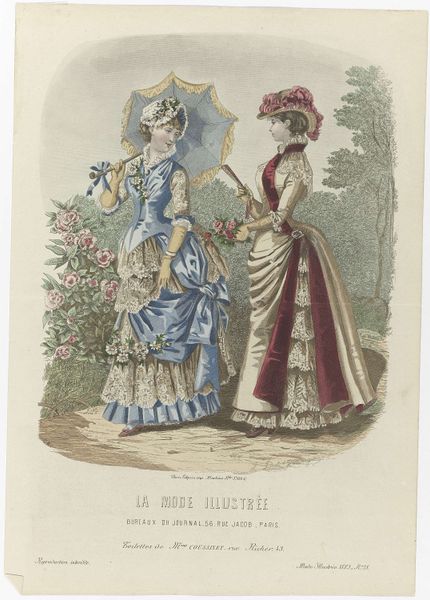
painting, watercolor
#
portrait
#
painting
#
impressionism
#
watercolor
#
coloured pencil
#
watercolour illustration
#
genre-painting
Dimensions: height mm, width mm, thickness mm
Copyright: Rijks Museum: Open Domain
This fashion plate, made by Firmin-Didot & Cie in 1882, presents two women adorned with the latest Parisian styles. The parasol, held by the figure on the right, is more than a mere shield from the sun; it’s a symbol of status and delicate femininity. Consider how the parasol’s form echoes the protective gesture seen in ancient depictions of goddesses extending a canopy over rulers. This motif, embodying care and divine favor, reappears throughout history. Yet, here, it’s adapted to the bourgeois woman, signifying her sheltered existence and elevated social standing. This transformation highlights a fascinating shift in meaning. The parasol evolves from a sacred emblem of power to an accoutrement of fashion, reflecting society's changing values and the growing influence of the middle class. The image taps into a collective desire for aspiration, subtly engaging our subconscious with a timeless emblem of protection and status. This cyclical evolution is a testament to the enduring power of symbols to adapt, resurface, and acquire new cultural resonance across generations.
Comments
No comments
Be the first to comment and join the conversation on the ultimate creative platform.
